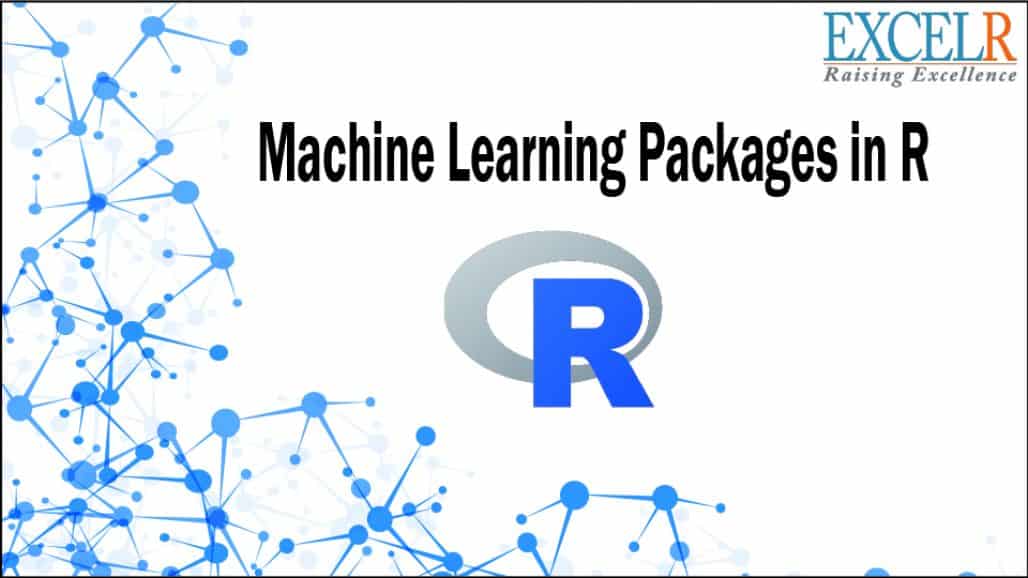Most commonly used Machine learning packages in R
I’m a big fan of R , it’s no secret. I have relied on it since my days of learning statistics back in university. In fact, R is still my go-to language for machine learning projects.
Three things primarily attracted me to R:
- The easy-to-understand and use syntax
- The incredible RStudio tool
- R packages!
R offers a plethora of packages for performing machine learning tasks, including ‘dplyr’ for dаta manipulation, ‘ggplot2’ for dаta visualization, ‘caret’ for building ML models, etc.
There are even R packages for specific functions, including credit risk scoring, scraping dаta from websites, econometrics, etc. There’s a reason why R is beloved among statisticians worldwide – the sheer amount of R packages available makes life so much easier.
R is an open-source language so people can contribute from anywhere in the world. You can use a Black Box in your code, which is written by someone else. In R, this Black Box is refereed to as a package. The package is nothing but a pre-written code that can be used repeatedly by anyone.
CARET
Classification and Regression Training (CARET) package is developed with the intent to combine model training and prediction. Dаta scientists can run several different algorithms for a given business problem using the CARET package. Dаta scientists might not be aware as to which is the best algorithm for a given problem. CARET package helps investigate the optimal parameters for an algorithm with controlled experiments. The grid search method of the caret R package searches parameters by combining various methods to estimate the performance of a given model. After looking at all the trial combinations, the grid search method finds the combination that gives best results.
CARET package is one of the best packages in R. The developers of this package understood that it is hard to know about the best suited algorithm for the given problem case. There can be situations where you are using a particular model and doubting your dаta but the problem lies in the algorithm you have chosen.
After installing CARET package, you can run names(getModelInfo()) and see that there are 217 possible methods which can be run through a single package.
To build any predictive model, CARET uses train() function; The syntax of train function looks like –
train(formula, dаta, method)
Where method is the predictive model you are trying to build. Let’s use the iris dаtaset and fit a linear regression model to predict Sepal.Length
Lm_model <- train(Sepal.Length~Sepal.Width + Petal.Length + Petal.Width, dаta=iris, method = “lm”)
summary(lm_model)
Documentation : https://www.rdocumentation.org/packages/caret/versions/6.0-84
e1071
This e1071 is one of the most widely used R packages for machine learning. Using this package, a developer can implement support vector machines (SVM), shortest path computation, bagged clustering, Naive Bayes classifier, short-time Fourier transform, fuzzy clustering, etc.
This kind of analysis is based on conditional probability, so dаta scientists can make use of e1071 R package which has specialized functions for implementing Naive Bayes Classifier.
Support Vector Machines are there to rescue you when you have a dаtaset which is not separable in the given dimensions and you need to promote your dаta to higher dimensions in order to classify or regress it.
Support Vector Machine a.k.a SVM uses Kernel Functions (To optimize mathematical operations) and maximize the margin between two classes.
Similar to other functions discussed above, syntax for SVM is also similar:
svm_model <- svm(Species ~Sepal.Length + Sepal.Width, dаta=iris)
Documentation : https://www.rdocumentation.org/packages/e1071/versions/1.7-2
KernLab
If you want to develop your project based on kernel-basedmachine learning algorithm, then you can use this R package for machine learning. This package is used for SVM, kernel feature analysis, ranking algorithm, dot product primitives, Gaussian process, and many more. KernLab is widely used for SVM implementations.
There are various kernel functions available. Some kernel functions are mentioned here: polydot (polynomial kernel function), tanhdot (hyperbolic tangent kernel Function), laplacedot (laplacian kernel function), etc. These functions are used for performing pattern recognition problems. But users can use their kernel functions instead of predefined kernel functions.
Documentation : https://www.rdocumentation.org/packages/kernlab/versions/0.9-27
Mlr
One of the most incredible packages of R machine learning is the mlr package. This package is an encryption of several machine learning tasks. That means you can perform several tasks by only using a single package, and you no need to use three packages for three different tasks.
The package mlr is an interface for numerous classification and regression techniques. The techniques include machine-readable parameter descriptions, clustering, generic re-sampling, filtering, feature extraction, and many more. Also, parallel operations can be done.
For installation, you have to use the below code:
install.packages(“mlr”)
To load this package:
library(mlr)
Documentation: https://www.rdocumentation.org/packages/mlr/versions/2.15.0
DаtaExplorer
This is my go-to package for performing exploratory dаta analysis. From plotting the structure of the dаta to Q-Q plots and even creating reports for your dаtaset, this package does it all.
Let’s see what DаtaExplorer can do using an example. Consider that we have stored our dаta in the dаta variable. Now, we want to figure out the percentage of missing values in every feature present. This is extremely useful when we’re working with massive dаtasets and computing the sum of missing values might be time-consuming.
You can install DаtaExplorer using the below code:
install.packages("DаtaExplorer")
Documentation : https://www.rdocumentation.org/packages/DаtaExplorer/versions/0.8.1
Installr
Do you update your R packages individually? It can be a tedious task, especially when there are multiple packages at play.
The ‘InstallR’ package allows you to update R and all its packages using just one command! Instead of checking the latest version of every package, we can use InstallR to update all the packages in one go.
# installing/loading the package:
if(!require(installr)) {
install.packages("installr"); require(installr)} #load / install+load installr
# using the package:
updateR() # this will start the updating process of your R installation.
# It will check for newer versions, and if one is available, will guide you through the decisions you'd need to make
Documentation : https://www.rdocumentation.org/packages/installr/versions/0.8
Closing note:
Before applying it to your program, you must have to know about the various options in detail. By using these machine learning packages, anyone can build an efficient machine learning or dаta science model. Lastly, R is an open-source language, and its packages are continually growing.
There are many other machine learning packages available in the CRAN repository like igraph, glmnet, gbm, tree, CORElearn, mboost, etc. which are used in different industries to build performance efficient models. We have observed the scenarios where changing just one parameter can modify the output completely. So, don’t rely on default values of parameters – Understand your dаta and requirements before applying any algorithm.











